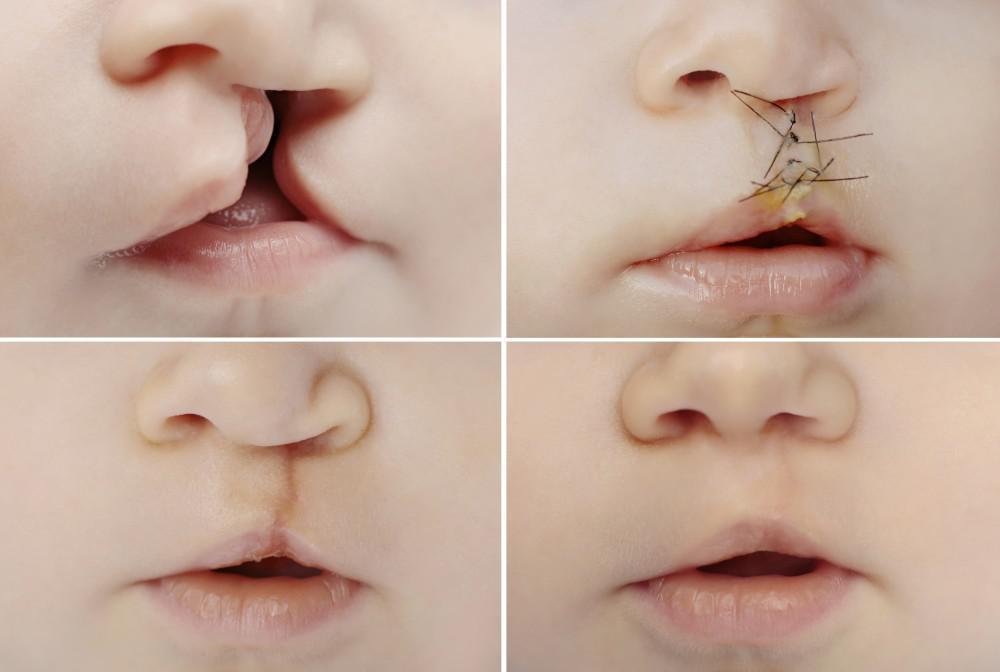Cleft lip and palate are among the most common congenital conditions worldwide, affecting one in every 700 babies. These conditions can lead to difficulties with feeding, speech, hearing, and dental development, in addition to emotional and social challenges. However, advancements in medical science have made it possible to repair these conditions, restoring not just functionality but also giving individuals a chance to smile with confidence. This blog post explores the intricacies of cleft lip and palate repairs, highlighting the processes involved and the impact of these life-changing surgeries.
What are Cleft Lip and Palate?
A cleft lip occurs when there is a physical split or separation of the two sides of the upper lip, which can extend beyond the base of the nose, including the bones of the upper jaw and/or gum. A cleft palate, on the other hand, occurs when the roof of the mouth contains an opening into the nose. These conditions can occur separately or together and can vary in severity.
Causes and Risk Factors
The exact causes of cleft lip and palate are not entirely known but are believed to be a combination of genetic and environmental factors. Risk factors may include family history, smoking during pregnancy, diabetes, and certain medications.
The Journey to Repair
The repair of cleft lip and palate is a complex process that often involves a team of specialists, including surgeons, dentists, orthodontists, otolaryngologists, speech therapists, and audiologists, to address the wide range of issues associated with the conditions.
Initial Assessment and Planning
The treatment plan is usually initiated soon after birth, with the first assessment typically occurring within the baby’s first few weeks. The initial assessment helps determine the extent of the cleft and the best approach for repair. In many cases, surgery to repair a cleft lip is performed within the first 3-6 months of life, while cleft palate repair often follows within the first 18 months.
Surgical Procedures
Cleft Lip Repair (Cheiloplasty): This procedure usually involves making incisions on either side of the cleft and then stitching the tissues together to create a more typical lip appearance. The goal is not only to improve the look of the lip but also to restore function, enabling better feeding and speech development.
Cleft Palate Repair (Palatoplasty): Repairing a cleft palate requires rebuilding the roof of the mouth to separate the oral and nasal cavities. This helps in proper speech development and reduces the risk of fluid entering the ears, which can lead to infections.
Follow-Up Treatments
Many children will require additional treatments as they grow. These may include orthodontic care to align the teeth and jaws properly, speech therapy to address any difficulties caused by the cleft, and possibly further surgical procedures to refine the appearance of the lip and nose or to address any residual issues with the palate.
Localized Care and Expertise
In Richmond, Indiana, families and individuals seeking cleft lip and palate surgery can find dedicated oral and maxillofacial professionals at local healthcare facilities. These experts offer precise, high-quality care focused on comprehensive recovery and the long-term well-being of patients. By using the latest surgical techniques and a compassionate approach, they aim to correct cleft conditions and help patients and their families with emotional and psychological healing throughout the process.
The Impact of Repair Surgeries
The benefits of cleft lip and palate repair surgeries go far beyond cosmetic improvements. They play a crucial role in improving the overall quality of life for affected individuals.
Nutritional Benefits
Repairing a cleft palate significantly improves a child’s ability to feed effectively, which is vital for growth and development. For infants struggling with feeding because of a cleft, the difference post-repair can be transformative.
Speech and Hearing Improvements
Cleft palate repairs play a critical role in speech development by allowing for the proper formation of sounds. Additionally, these surgeries can reduce the risk of fluid build-up in the ears, thereby decreasing the likelihood of hearing loss.
Emotional and Social Benefits
The psychological impact of cleft lip and palate repairs cannot be overstated. The restoration of a more typical appearance can boost self-esteem, reduce stigmatization, and enhance social interactions. Children and adults alike can face the world with newfound confidence, knowing their smiles reflect their true selves.
Cleft lip and palate repairs represent more than just medical procedures; they are journeys of transformation that touch every aspect of an individual’s life. From the first assessments to the final touches of surgery, these repairs require precision, patience, and a multidisciplinary approach to address the physical and emotional complexities involved. The advances in medical science, along with the dedication of healthcare professionals, ensure that individuals born with cleft conditions can lead full, vibrant lives. The road to recovery might be long, but the outcome—a restored smile—speaks volumes, symbolizing hope, resilience, and the power of modern medicine.

